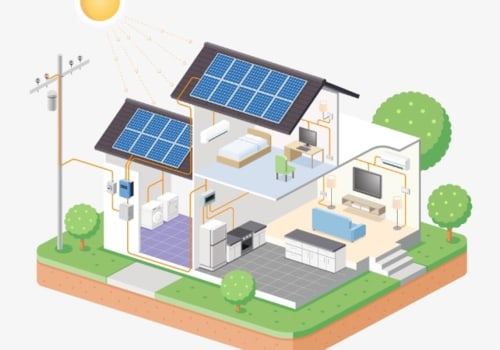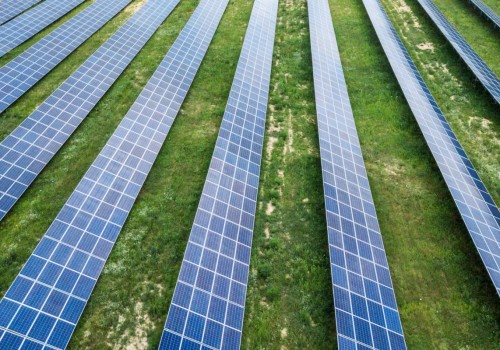Solar energy has become a leading solution for clean, renewable power, attracting homeowners and businesses looking to reduce energy costs and environmental impact. One of the most compelling reasons to invest in solar technology over the last decade has been the availability of federal tax credits, which significantly lower the upfront cost of solar installations. However, 2025 marks a pivotal year for these incentives due to recent legislative changes that will affect how much financial benefit you can receive.
What Are Solar Tax Credits?
Solar tax credits, commonly known as the Investment Tax Credit (ITC), are incentives offered by the federal government to encourage the installation of solar energy systems. The ITC allows qualifying taxpayers to deduct a portion of their solar installation costs directly from their federal income taxes. This credit is a dollar-for-dollar reduction in the amount of tax owed, making it a highly valuable incentive that lowers the overall cost of going solar.
The ITC applies to both residential and commercial solar systems, including photovoltaic (PV) panels, solar water heaters, and some solar heating and cooling equipment. It covers equipment costs, labor, and even some additional expenses related to the installation process.
Historical Overview of Solar Tax Credits
The federal solar tax credit was first introduced in 2006 as part of the Energy Policy Act and initially covered 30% of the cost of solar systems. This 30% rate remained steady for several years before a gradual phase-down plan was implemented. The phase-down aimed to reduce the credit percentage incrementally over time, eventually reaching zero for residential systems.
In recent years, especially with growing emphasis on clean energy and climate goals, Congress extended and temporarily increased the ITC to maintain momentum in the solar industry. However, the legislative landscape shifted significantly in 2025 with the enactment of new laws that altered the availability and amount of these tax credits.
Key Changes to Solar Tax Credits in 2025
The most notable change for 2025 is the expiration of the 30% residential solar tax credit at the end of the year. This means that homeowners who have their solar systems installed and operational by December 31, 2025, can still claim the 30% credit on their federal taxes. However, any installations completed after this date will no longer be eligible for the residential ITC.
For commercial and utility-scale solar projects, the tax credit does not disappear entirely but will undergo a phased reduction. The new law has introduced accelerated step-downs for commercial installations, lowering the credit percentage in subsequent years. Businesses investing in solar should closely monitor these changes and consult with tax professionals to maximize their benefits.
Eligibility Requirements
To claim the solar tax credit, several eligibility requirements must be met:
- Ownership: The solar system must be owned by the taxpayer claiming the credit. Leasing a solar system typically disqualifies you from claiming the ITC.
- New Equipment: The credit applies only to new solar energy property. Used or refurbished systems do not qualify.
- Installation Date: The system must be placed in service during the applicable tax year and meet the deadlines for credit eligibility.
- Primary or Secondary Residence: For residential credits, the solar system must be installed on a primary or secondary home located in the United States.
How to Claim the Solar Tax Credit
Claiming the federal solar tax credit involves filing IRS Form 5695, Residential Energy Credits, with your federal tax return. This form calculates the credit amount based on your solar installation costs and ensures the credit is properly applied against your tax liability.
It’s important to keep detailed records of your solar system purchase, installation invoices, and any other relevant documentation. Consulting with a tax advisor is recommended to ensure accurate filing and to maximize your tax benefits.
Additional Incentives and State-Level Programs
While the federal tax credit offers significant savings, many states, municipalities, and utilities provide additional incentives that can further reduce the cost of solar installations. These may include:
- State Tax Credits: Some states offer their own tax credits for solar energy systems.
- Rebates: Direct rebates or cash incentives to lower upfront costs.
- Net Metering: Policies that allow solar system owners to sell excess electricity back to the grid, effectively reducing energy bills.
- Property and Sales Tax Exemptions: Some jurisdictions exempt solar equipment from property or sales tax.
Investigating local incentives in conjunction with federal tax credits can maximize your overall savings and improve the return on your solar investment.
Financial Impact and Considerations
The 30% federal solar tax credit has been instrumental in reducing the cost of solar systems by thousands of dollars for many homeowners and businesses. With the expiration approaching, this opportunity to lower your solar investment cost will disappear, potentially increasing the financial burden of going solar after 2025.
Additionally, solar system prices have declined dramatically over the past decade due to improvements in technology and manufacturing scale. Combining lower system costs with tax credits has made solar more affordable than ever. However, losing the residential tax credit could slow adoption rates unless replaced by other incentives.
Planning Your Solar Investment in Light of 2025 Changes
If you are considering solar power for your home or business, planning ahead is crucial. Here are some tips to keep in mind:
- Act Before the Deadline: To benefit from the 30% residential credit, ensure your solar system is installed and operational before the end of 2025.
- Evaluate Your Budget: Factor in the loss of the tax credit when planning for installations beyond 2025, as the cost of solar may effectively increase.
- Consider Financing Options: Many companies offer solar loans, leases, or power purchase agreements that might affect your eligibility for credits and overall savings.
- Consult Professionals: Solar installers and tax professionals can help you navigate eligibility, timelines, and financial implications.
Looking Beyond Federal Tax Credits
While federal tax credits have been a key driver for solar adoption, the solar industry continues to grow and evolve with advances in technology, storage, and grid integration. Battery storage systems, for example, are becoming increasingly popular, enabling homeowners to store excess solar energy for nighttime use or outages. Although these systems may have separate incentives or credits, they represent the future of comprehensive solar energy solutions.
Moreover, as climate policies continue to develop, new incentives and funding opportunities may emerge at state or local levels to support clean energy. Staying informed on these developments is important for anyone interested in solar power.
Common Questions About Solar Tax Credits 2025
- Q: Can I still get a tax credit if I lease my solar system?
- A: Generally, the federal solar tax credit is only available to system owners. If you lease your solar panels, the leasing company typically claims the credit, not you.
- Q: What costs are included in the tax credit calculation?
- The credit covers the cost of the solar panels, inverters, installation labor, permitting fees, and other related expenses.
- Q: What happens if I don’t have enough tax liability to use the full credit?
- The solar tax credit is non-refundable, which means it can only reduce your tax liability to zero and does not result in a refund for unused amounts. However, unused credits can usually be carried forward to future tax years.
Conclusion
The year 2025 represents a turning point for solar tax credits, particularly with the expiration of the residential 30% federal solar tax credit. For homeowners and businesses eager to take advantage of these incentives, timely action is essential. By understanding the changes, eligibility criteria, and how to claim the credit, you can maximize your savings and make an informed decision about investing in solar energy.
Even as federal credits evolve, solar power remains a promising path toward sustainable energy independence and environmental responsibility. Exploring current incentives alongside technological advancements will help you harness the full potential of solar energy well into the future.










